
Inns, Societies & Processions - Inns & public houses
Convivial hosts have welcomed patrons to the town's numerous inns and public houses since 1814. Two of the town's first
hostelries were in Front Street and King Street. The King's Arms - now the Shipwright - had a bar parlour where, in early
times, "the elite of the little town met each evening to discuss the passing events, with dignity and decorum". The story that
almost every other house in Front Street once catered for thirsty Dockyard workers, though, is probably a slight
exaggeration.
The Royal Oak Hotel, in Commercial Row, was a favourite Friday payday meeting place for Dockyard workers and their wives
in the years when "the leading man of the gang would hand each man his share". The hotel's shop offered anything from "a
pennyworth of tin tacks to a mangle, a bun to a sack of flour", so most family provisions could be bought on the spot. Later,
each man was paid at work and wives would wait at the Dockyard gates.
The Pier Hotel was near today's Travelodge, on the old mail coach route to Hobbs Point. Its interior was appropriately
decorated with "many old prints of toll gate scenes etc".
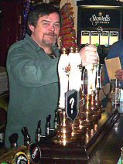
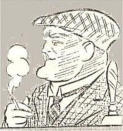
Various early clubs and societies met regularly, and for dinners and special occasions, in particular hostelries.
Around 1900, RAOB lodges ("Buffs") met at the Pier Hotel and at the Bush Hotel, in Meyrick Street. The Bush Hotel also hosted the 1862 Mutual
Improvement Society dinner. Their guest speaker was appropriate for a club sharing educational talks and enjoyable books - Thomas Dunbar
Harries, Librarian of the Mechanics' Institute. Pembroke Dock's early Freemasons met first in private houses, then in hotels, including the Victoria
and the Royal Edinburgh.
The Victoria Hotel also hosted meetings, concerts and the County Court, and was used as an election centre. It housed the County School around
the end of the nineteenth century, and was by 1905 a private dwelling.
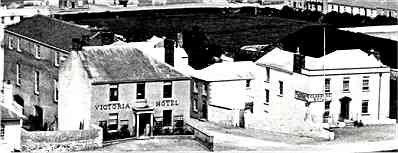
The Victoria Hotel in its heyday. The function block is at the rear, and
the Clarence Inn is across the road.

Inns, Societies & Processions - Inn signs
George Mason tells of "a poor dilapidated man" who, in the nineteenth century, appeared at
the Royal Oak in Commercial Row. He agreed to earn his keep by repainting the inn's
signboard. The landlord was astonished at the result - "a work of remarkable power, which not
only appealed to the artistic taste of the landlord, but to the elite of the town". The
mysterious painter declined to give his name.
Later inn signs have a similar appeal.
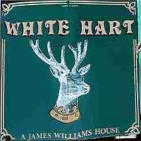
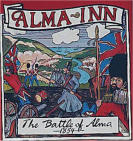

(Sources: Mason 76) Pictures by courtesy of: White Hart Inn sign, photograph by Mrs Gwen Griffiths - Alma Inn sign, Mr & Mrs N. Porter (painter Mr Robert Evans, photograph by Creative Looks).
Inns, Societies & Processions - Early friendly societies
Nineteenth century friendly societies acted rather like insurance schemes, collecting regular payments from members. The
Pembroke Dock Friendly Brethren Benefit Society, for example, offered its members "support in their sickness, old age and
burying their dead" and met at the Jolly Bacchus in King Street. The society's president in 1821 was Mr Richard Tregenna,
the enterprising Temperance pioneer and Methodist from whom "Tregenna's Hill" takes its name.
The Pembroke Dock Loyal Cambrian Society of Shipwrights had, in 1821, "a box with three locks and keys". Three officials,
presumably, had to be present to open it. The Pembroke Dock Provident Society, in 1824, met in the Caledonian. The first
Caledonian, not far from the present one, had an "imposing sign and model of a full grown kilted Scotchman projecting
from the front over the door".
Later nineteenth century friendly societies; Oddfellows, Foresters, Rechabites.
After 1850, towns such as Pembroke Dock would have branches of nationwide friendly societies. The Oddfellows met at the
Victoria Hotel and the Rose and Crown, and the Ancient Order of Foresters, until c.1900, at the White Hart in Pembroke
Street. Both enjoyed holding dinners and processions. The Foresters were remembered for their colourful regalia and
feathered hats.
The Temperance Hall was built in 1845 as a less alcoholically orientated meeting place and social centre. Here met the
Rechabites friendly society, named after a Biblical family of abstainers. Pembroke Dock Temperance supporters carried, at
their first procession, a barrel the two ends knocked out. This summed up their attitude to the pleasures of endless
drinking - "we can see through it".
Those who enjoyed a drink, and those who did not, could take radically different views of the same event.
An approving report of the Oddfellows' 1855 "rustic sports" on the Barrack Hill describes the Oddfellows marching in full
regalia from the Victoria Hotel to church. Returning to the Victoria they enjoy a "capital dinner" then proceed to the
sports. "The festivities were prolonged until a late period".
A second report views these proceedings in a different light. The organisers, "a class of men whose characters do not stand
high for either temperance or morality", arranged "some of the most indecent and demoralising transactions that have ever
disgraced our town".
Perhaps wisely, the editor prints both versions of events without getting drawn into this tricky debate.
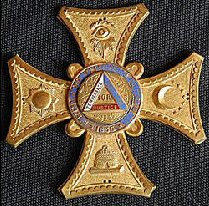
In the later nineteenth, and twentieth, centuries, organisations such as the Freemasons and the Conservative, Liberal and
Labour parties established their own halls. The charitable "Society for the Relief of Distress" met on various premises in
Victorian and Edwardian times. The Chamber of Commerce, founded in 1882, still flourishes.
(Sources: Pem RO PQ/RF/16, 17, 19; Mason 66-7; Peters 57-68, 138 ; HMT 4 July 1855; Armstrong, Street name ...)
Photographs by Creative Looks


Inns, Societies & Processions -
Processions
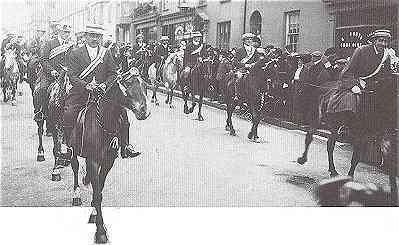
Queen Street, 1911. Horsemen lead the procession celebrating the
Coronation of King George V.
In Victorian times, street processions celebrated foundations and anniversaries of chapels, churches, and organisations ranging from the Mechanics' Institute
to the Co-op. The townspeople were also accustomed to frequent military pageantry. The weekly soldiers' church parade, for example, was "a considerable
feature in Pembroke Dock, the bands being headed by some hundreds of townsfolks".
This background may have the encouraged increasingly ambitious processions, to mark events of national importance such as Queen Victoria's jubilees. These
festivities featured bands, bonfires and games on the Barrack Hill, and the distribution of souvenir medals to the hundreds of Sunday school children who took
part.
In 1902, King Edward VII's Coronation was celebrated in style. After religious services, 3,500 children assembled in Albion Square to march around the town
with six marshals on horseback, all the town's clergymen and three bands. Mrs Peters describes what came next - "the Historical Pageant and Empire Carnival
... Pembroke Dock has never before witnessed such a magnificent spectacle". Ancient Druids in flowing white robes, headmaster T.R. Dawes "with his forty
cavaliers", Queen Anne with her courtiers, and numerous other groups, delineated the course of British history.
Evening events began with a packed concert, and more historical tableaux, in the Market Hall. Two days later, the celebrations concluded with a bonfire on
the Barrack Hill.
The town's centenary celebrations, in 1914, featured a procession including bands, soldiers, sailors, several dozen horsemen, and horse drawn floats. The Post
Office display featured state of the art technology - "sending telegrams Miss Owen, receiving telegrams Miss Classy, telephonist Miss George". Other carts
carried large models of ships built in the Dockyard. Sadly, these models were later lost in the 1922 mould loft fire.

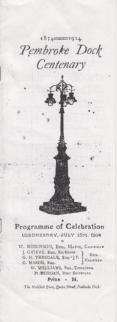
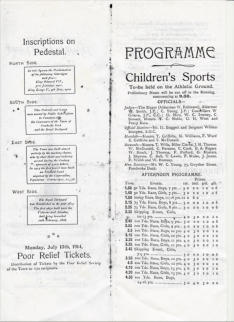
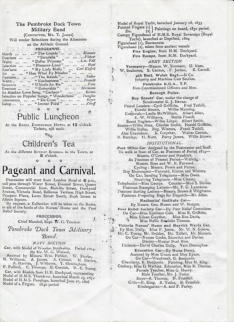
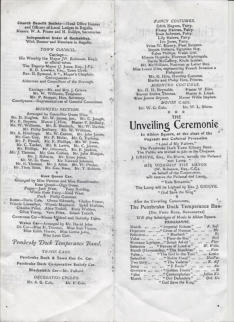
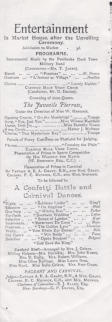
Twentieth century carnivals and theme weeks, the Harlequins' summer carnival and the winter carnivals that continued from 2000 till 2015, with their street
parades and other events continue a Pembroke Dock tradition going back more than a century. Pembroke Dock still hosts its own annual celebrations to this
day “The Midsummer Festival” with a week of events and celebrations, past events can be viewed at Pembroke Dock Web Project In 2014 a Bi- Centenary
was celebrated with a year of events a program can be viewed in The Dock Archive.
(Sources: Reynolds, Reminiscences; Peters 138-147; Dawes 5; Centenary) Trindall postcard by courtesy of Mr Phil Carradice. CatsWebCom/Moonlightblue
(AJ Catswebcom 2018)
TOP
HOME
(Amendment, updates and additions) (AJ) Anndra Johnstone
This site is designed, published and hosted by CatsWebCom Community Services © 2018 part of Pembroke Dock Web Project
(Sources: Johnson, Keith, The pubs ..., 149, Mason 43, 76; Peters, 46, 48, 56-7, 69, 114; Reynolds, Old inns; PH 13 June 1862)
(Pictures by courtesy of: Mr Riordan, Melanie Phillips - Victoria Hotel, Pembrokeshire County Council Museum Service - Matt cartoon from Sunday Graphic).






























